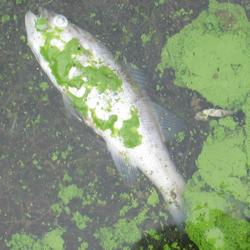Health Effects
Health Effects
Filter Total Items: 75
Behavioral Toxicology Core Technology Team
About the Research. The Environmental Health Program supports scientists in the Behavioral Toxicology Core Technology Team (CTT) at the Columbia Environmental Research Center. The scientists identify how contaminants alter the behavior of organisms and what implication those changes may have on individuals, populations, and communities.
Photomicroscopy and Flow Cytometry Core Technology Team
About the Research The Photomicroscopy and Flow Cytometry Core Technology Team (CTT) as part of the Environmental Health Program works to develop and apply biomarkers to evaluate the potential impacts of environmental contaminants at cellular and molecular levels. Because molecular and biochemical responses of cells are preceded by chemical changes in nuclei, cytoplasm, membranes, and...
Functional and Molecular Bioassay Core Technology Team
About the Research The Functional and Molecular Bioassay Core Technology Team (CTT) as part of the Environmental Health Program utilizes reporter assays, quantitative gene expression analyses, and high-throughput sequencing methods to produce functional endpoints across a broad scope of environmental topics and sample matrices.
Drinking Water and Wastewater Infrastructure Science Team
The team studies toxicants and pathogens in water resources from their sources, through watersheds, aquifers, and infrastructure to human and wildlife exposures. That information is used to develop decision tools that protect human and wildlife health.
Toxins and Harmful Algal Blooms Science Team
The team develops advanced methods to study factors driving algal toxin production, how and where wildlife or humans are exposed to toxins, and ecotoxicology. That information is used to develop decision tools to understand if toxin exposure leads to adverse health effects in order to protect human and wildlife health.
Immunomodulation Science Team
The Immunomodulation Integrated Science Team focuses on contaminant and pathogen exposures in the environment that might influence the immune systems of wildlife and the connection to their shared environment with humans. In collaboration with public-health officials, the Team also addresses potential human-health risks stemming from similar exposures. If actual risks are identified, this Team...
Ecologically-Driven Exposure Pathways Science Team
The Ecologically-Driven Exposure Pathways Integrated Science Team identifies how ecological pathways and physiological processes within a single organism can alter exposure and toxicity of contaminants and pathogens and seek to understand outcomes at different scales from individuals to populations and ecosystems.
Ecotoxicology and Ecological Risks of Per‐ and Polyfluoroalkyl Substances
Ecotoxicology and ecological risks of per- and polyfluoroalkyl substances are summarized to highlight critical gaps and uncertainties, and to provide potential approaches to fill those gaps, including the development of targeted monitoring programs and cross-disciplinary approaches.
Scientists Provide an Understanding of Anticoagulant Rodenticide Exposure in Non-Target Bird Species
U.S. Geological Survey scientists and their partners utilize laboratory and field studies and existing information to improve understanding of anticoagulant rodenticide exposure and effects to wild birds.
Nationwide Occurrence
A National-scale approach is used to examine and analyze per- and polyfluoroalkyl substances (PFAS) prevalence and magnitude in watersheds and aquifers. As an initial step to fill known science gaps in the understanding of human and wildlife exposure, the team will provide a snapshot of PFAS in drinking water paired with bioaccumulation in fish and wildlife near known or suspected sources of...
Advanced PFAS Measurement Methods
Environmental Health Program scientists, in collaboration with other USGS scientists, are developing complementary field and laboratory methods and capabilities to detect and quantify a range of target and nontarget per- and polyfluoroalkyl substances (PFAS) and indicator compounds at low levels (parts per trillion) in a variety of environmental matrices. The PFAS Integrated Science Team is...
Energy Integrated Science Team
The Energy Lifecycle Integrated Science Team focuses on the potential for contaminant exposures in the environment that might originate from energy resource activities including, extraction, production, transportation, storage, extraction, waste management and restoration. Perceived health risks to humans and other organisms will be distinguished from actual risks, if any. If actual risks are...













